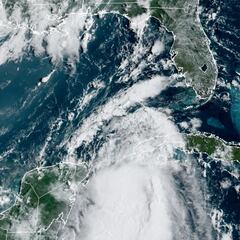The stunning connection between hurricanes and Waffle House
The ‘Waffle House Index’ is used by government agencies to measure the severity of weather patterns in a more practical way.


The Waffle House Index is a practical and easily understandable way to evaluate the impact of disasters in the US. It is unofficially used by the Federal Emergency Management Agency (FEMA) after being coined and popularised by former FEMA administrator Craig Fugate.
The Index measures the resilience and preparedness of an area in the face of a disaster, such as a hurricane or tornado. The index is based on the status of Waffle House restaurants in the affected area.
The reasoning behind using Waffle House as an indicator is that the chain is known for its ability to stay open in extreme weather. Waffle House has a reputation for being well-prepared for emergencies and disasters, often having backup generators and a flexible menu.
Waffle House has a Storm Center with an entire operations team that is so good at their job they assist FEMA during hurricanes.
— Alex Cohen (@anothercohen) October 9, 2024
The European mind cannot comprehend this pic.twitter.com/Wfmw5hPzzC
“I hadn’t had a hot meal in two days, and I knew they’d be open,” Waffle House customer Nicole Gainey told the Wall Street Journal after Hurricane Irene devastated North Carolina in 2017.
How the Waffle House Index measures disasters
Green: If a Waffle House restaurant is operating normally and serving a full menu, it indicates that the area is likely functioning well, and the disaster impact is minimal or under control.
Yellow: If a Waffle House is operating with a limited menu (e.g., serving only a few items), it suggests that the area is experiencing a moderate impact or some level of disruption.
Red: If a Waffle House is closed entirely, it signals that the area has been severely affected by the disaster, and there may be significant infrastructure damage, power outages, or other critical issues.
How is it being used for Hurricane Milton?
The Waffle House Index for Hurricane Milton is currently at Code Red. Dozens of Waffle House locations in Florida, mostly in the Tampa area, have been shut down ahead of the hurricane’s arrival.

